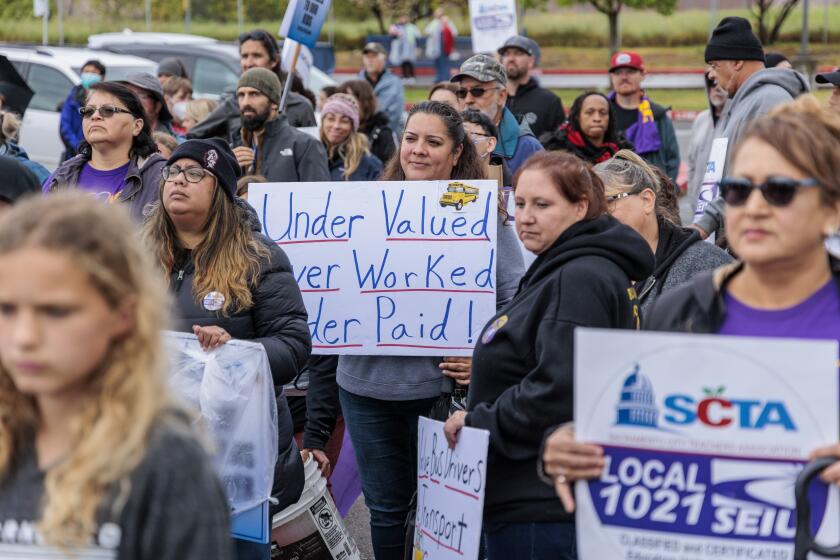California spends how much on school district salaries? We don’t know, and that’s a problem

- Share via
Most California school districts failed to submit salary information to the state controller’s office again this year. Overall, 78% of school districts did not report how much they spent on pay for administrators, teachers and other district employees. What’s more, this is a slight increase in the non-reporting rate from last year.
This is a trend that’s going in the wrong direction. But until districts are required to hand over their annual spending, as cities and counties are, many won’t bother. The state spends about 40% of its budget on K-12 education, and knowing the specifics of salary expenditures would help Californians understand how their taxes are being spent. But clearly school districts don’t care.
Credit to the school districts that did report this year, including the largest, Los Angeles Unified School District, and Long Beach Unified. The list of those that didn’t is much longer and includes San Gabriel Unified, Glendale Unified, Burbank Unified and Beverly Hills Unified districts.
Earlier this year, a bill written by state Sen. Steve Glazer (D-Orinda) that would have required school districts to submit their payroll information annually died in the Assembly Appropriations Committee after it was opposed by several public employee unions and, disappointingly, Controller Betty Yee.
Under a new bill, California’s school districts would be required to submit salary data with the state Controller, as local governments have been doing for a decade.
Critics argued that the state Department of Education already provides salary information. But that reporting only shows minimum, average and highest salaries for teachers and doesn’t include details on benefits or any information on administrators’ pay. The California School Employees Assn., which claims to support pay transparency, said it would be unfair to require the disclosure of school employee salaries but not include other state-funded education staffing costs, including charter schools, independent contractors and corporations.
Current law gives the controller’s office authority to collect salary pay data, but the controller hasn’t been doing this. Yee’s office also said that compiling the detailed salary data and enforcing that each school district submit the data would require five additional staffers and cost $550,000.
Details matter, particularly when it comes to the state budget. We hope Glazer, who unsuccessfully ran for state controller in the June primary, will try to pass this important transparency bill again in 2023, and that newly elected state controller Malia Cohen will support it in the interest of public transparency.
This is especially important at a time of increased scrutiny of schools as they battle learning gaps due to the pandemic. Are school district administrators paid too little to reverse the troublesome learning gaps experienced by most students? Or are they paid too much?
We will never know. Unless the law compels school districts to reveal this critical salary data.
More to Read
A cure for the common opinion
Get thought-provoking perspectives with our weekly newsletter.
You may occasionally receive promotional content from the Los Angeles Times.










